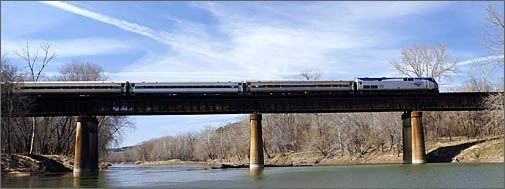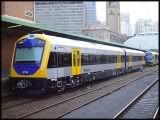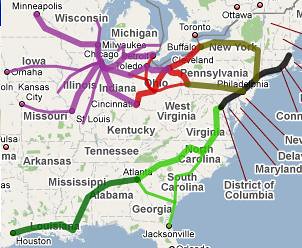Burning the Midnight Oil for Living Energy Independence
 A few weeks back, SubsidyScope, “launched by The Pew Charitable Trusts, aims to raise public awareness about the role of federal subsidies in the economy”, pursued its mandate into transport subsidies, coming out with a study with the headline figure of $32 subsidy per passenger for Amtrak.
A few weeks back, SubsidyScope, “launched by The Pew Charitable Trusts, aims to raise public awareness about the role of federal subsidies in the economy”, pursued its mandate into transport subsidies, coming out with a study with the headline figure of $32 subsidy per passenger for Amtrak.
Why Amtrak? Why not provide a headline figure on federal subsidy per motorist or airplane passenger? Critics of the report suggest that the answer is simple – consider, for instance, Charleston WV mayor Danny Jones:
Jones admits Amtrak relies heavily on subsidies, but so do other modes of transportation, he said.
“I think it’s just easier to see how much of it’s subsidized with Amtrak,” he said.
And there is a lot of merit in that. Further, SubsidyScope is not focusing on Government subsidy, but on Federal subsidy. Not only is it harder to analyze government subsidies to driving and flying, given how many direct and indirect subsidies there are to take into account – but many of the subsidies are at the state and local government level, so for SubsidyScope’s purposes they “don’t count”.
But its worse that that. Even accepting SubsidyScope’s twisted framing of the issue of government subsidies – the actual core part of the analysis that they themselves perform is hopelessly bad. The gory details, and then the numbers that pity forced me to rescue from the clutches of SubsidyScope, below the fold.






 Let construction or upgrade of a rail corridor be proposed, and almost immediately the cry goes up, “but we can’t afford it! It costs too much!”.
Let construction or upgrade of a rail corridor be proposed, and almost immediately the cry goes up, “but we can’t afford it! It costs too much!”. Today, the focus is on one lovely rhetorical ploy used by anti-rail advocates to try to put one over on people with limited experience with trains. This relies on the false framing that “trains is trains”, and uses something that is true about a particular kind of local rail transport to mislead people about 110mph Emerging High Speed Rail in particular.
Today, the focus is on one lovely rhetorical ploy used by anti-rail advocates to try to put one over on people with limited experience with trains. This relies on the false framing that “trains is trains”, and uses something that is true about a particular kind of local rail transport to mislead people about 110mph Emerging High Speed Rail in particular. The increasingly
The increasingly  It is widely remarked that the US Department of Transport map of High Speed Rail Corridors leaves a lot of obvious holes.
It is widely remarked that the US Department of Transport map of High Speed Rail Corridors leaves a lot of obvious holes. Morris
Morris  Freakonomist Eric Morris finishes up his tag-team attack with Ed Glaeser on the HSR policy with a post that confesses to the hack jobs both are doing on HSR policy – but works hard to spin the confession into a defense of the hackery.
Freakonomist Eric Morris finishes up his tag-team attack with Ed Glaeser on the HSR policy with a post that confesses to the hack jobs both are doing on HSR policy – but works hard to spin the confession into a defense of the hackery.